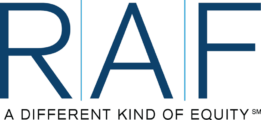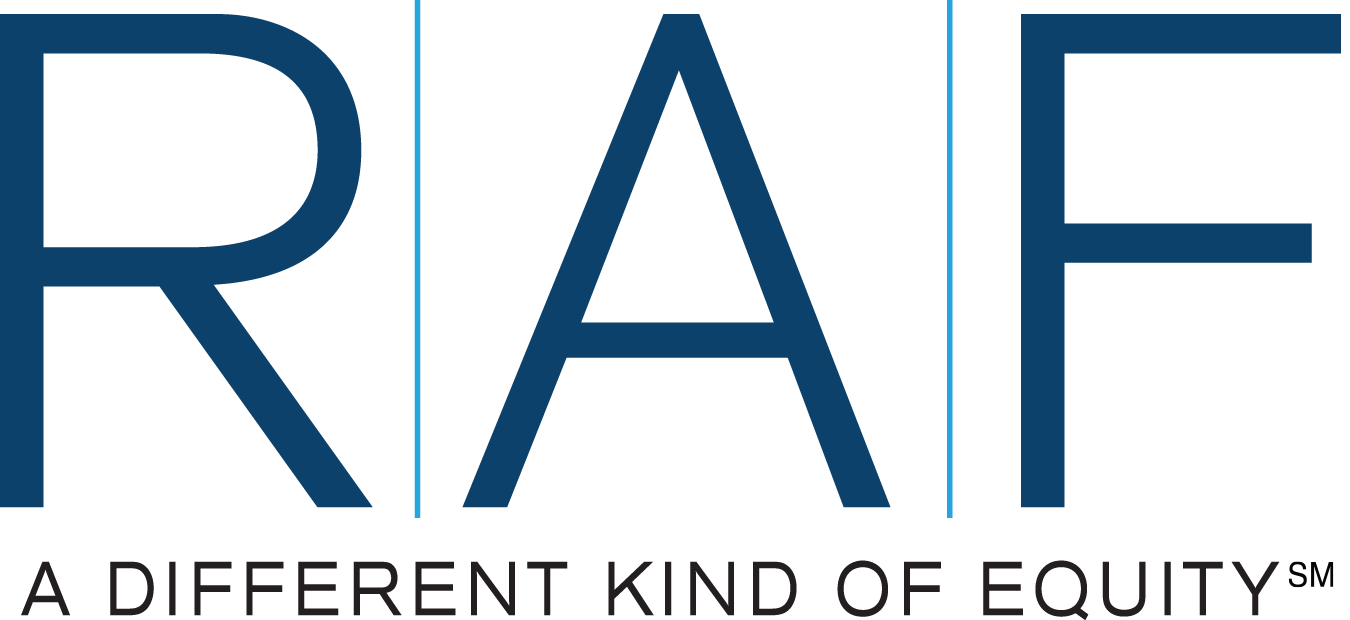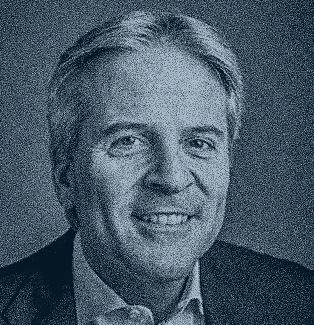

Take a deeper dive into how we think and why we’re unlike other firms. Learn what happens behind the scenes when we invest in a company – and see how our support over the long term results in successful outcomes.
We’re RAF. And we’re a different kind of equity.
Patient approach pays off

Freedom Medical
2012
RAF invests in Freedom Medical, partnering with company founders Dom Greco and Frank Gwynn to access capital necessary to execute strategic geographic expansion and product line diversification. Freedom has 22 branches and approximately $50 million of mobile medical equipment at this time.
2012-2015
Management quickly recognizes the competitive nature of the mobile medical equipment rental industry and begins investing more heavily in specialty beds (low beds, bariatric beds, patient security beds) and therapeutic surfaces. RAF infuses approximately $20 million over the next four years in beds and surfaces, generating $15 million in rental revenue by 2016.
2015-2018
In 2015, newly hired CEO Mike Boylan immediately focuses on the quality and rental-readiness of Freedom’s mobile medical equipment and begins creating branded and differentiated beds and therapeutic services. Over the next two years, RAF and Freedom develops several innovative beds and surfaces in cooperation with its manufacturing partners. Beds (branded under the “Freedom” name) and surfaces (branded as “Wave” and “Advanced Wave”) are tested with leading hospitals. Freedom commissions white papers quantifying product benefits that lead to superior patient outcomes.
2019
Freedom is awarded bed and therapeutic surfaces contracts with several prominent health care organizations, including the Mayo Clinic and Johns Hopkins Medical Center. These organizations recognize the company’s exceptional products and services, unmatched patient outcomes and potential cost saving from shorter patient stays and fewer patient readmissions.
2020-2021
As Covid-19 strains the U.S. healthcare system, RAF and Freedom answer the call, providing timely delivery of mobile medical equipment and beds and surfaces to struggling hospitals and temporary medical facilities. The company strategically opens temporary warehouses and bio-medical service centers to provide faster service and build redundancy in delivery and cleaning functions. As a result, Freedom is awarded with several new customer relationships – hospitals that recognized the commitment to serving them and their patients.
2021-2022
The company wins several contracts with additional group purchasing organizations, including Kindo, Ascent and Health Trust. These contracts expand RAF and Freedom’s reach into a large collection of hospital networks.
2022
RAF sells Freedom Medical to US Med-Equip, a portfolio company of Freeman Spogli & Company. At the time of sale, Freedom branch network has grown to 43 branches, and beds and therapeutic surfaces revenue represented 50% of total revenue. Freedom further diversified its product offering into asset management for several hospitals. Once again, RAF demonstrates the value of a patient capital approach. Though Freedom Medical required significant investments in leadership, personnel branches and rental equipment, RAF realizes an IRR in excess of 25% over a 10-year hold period.
Chemistry meets opportunity

Steamist
Our unique investment structure – including our operational focus, differentiated financing approach and patience – makes us a particularly attractive partner for entrepreneurs seeking to retain equity, as well as industry executives looking for equity sponsorship in management buyout situations. Our acquisition and ownership of Steamist is illustrative of these qualities.
2006
Steamist is a leading, premium-branded manufacturer of steam generators primarily for luxury residential bathrooms. Two plumbing industry executives, Jeff Noll and Jeff Carney, each leaders at the American division of a Global 1000 plumbing manufacturer, identify Steamist as an excellent acquisition opportunity. When their board of directors pass on the Steamist opportunity, the duo contacts an M&A advisor to identify a private equity fund with whom they could partner to acquire Steamist.
Cognizant of RAF’s operating model and philosophy, this advisor facilitates a meeting. Based upon both personal chemistry and the strength of the opportunity, the parties aggressively pursue the acquisition. Solid relationships quickly emerge among the new partners and with the founder of Steamist, as well as with the existing management team. Within a few months of the initial meeting, RAF, in partnership with Jeff Noll and Jeff Carney, acquires Steamist. Consistent with his desires, the founder retires shortly after the closing, while the remaining managers, along with Mssrs. Noll and Carney, form the new leadership team.
2007
The company achieves record sales and earnings. The new team overhauls the existing sales and marketing materials, initiates a new branding effort, and expands and modernizes the product line. Furthermore, the search begins for a new and larger manufacturing facility. While much is changed, the tradition of product quality, providing strong support for the company’s distribution partners and the family-like culture of Steamist, remain constant. Continued and accelerated growth looks very likely.
2008
As the year begins to unfold, however, tailwinds become headwinds as the Great Recession and corresponding housing crisis rapidly unfurls. With the housing market in free fall, unsurprisingly, Steamist’s sales plummet. Revenues decline precipitously, while profitability margins compress. Had Steamist been financed by a typical private equity group with stand-alone financing, the company would have faced a credit default and possible liquidation. The creditors would have been in control of the business and its destiny. Cost cutting, job loss and equity degradation would have been swift and severe. In contrast to the traditional private equity approach, however, RAF has been built to weather short-term crises, to protect fundamentally sound assets, and to enable them to succeed long-term. Because our companies participate in a portfolio-wide revolving credit facility, the strong operating performance of RAF’s other portfolio companies (particularly those that operate more independently of the business cycle), and the lower leverage that RAF deploys across its businesses, carries Steamist through this crisis. Employees are retained, production compromises are not needed and investments in product development and marketing continue unabated.
2009-2011
RAF and Steamist not only persevere but, in fact, double down. Utilizing leading design and technology resources, significant investments are made in developing a new generation of products. Our wholly owned sourcing and logistics arm, RAF Asia, assists in finding reliable, state-of-the-art sources for components that Steamist had traditionally imported. Vendor relationships are also established to produce a new suite of product features, including music and chromatherapy. During this same period, we reaffirm our commitment to domestic manufacturing and make the decision to move from our cramped, outdated production facility to a larger, modern facility located within five miles of Steamist’s existing northern New Jersey location. This enables us to maintain our loyal, stable employee base. Steamist emerges stronger than ever with best-in-class products and facilities.
2012-2016
As Steamist’s revenues rebound faster than the general plumbing industry, our market share grows. Our flexible capital structure gives the company the ability to weather the storm during the Great Recession and housing bust. We continue to invest in building out our team and nurturing our important customer relationships.
2017-2020
With retail products becoming prohibitively expensive to the end consumer, Steamist embarks on a bold channel expansion strategy. Utilizing its unmatched engineering prowess and manufacturing quality, the company launches EliteSteam, a lower-priced steam generator unit with streamlined options designed for the DIY homeowner. With RAF’s assistance, the company rapidly builds e-commerce assets and digital marketing capabilities, successfully penetrating the DTC channel. At a substantially lower retail price point – and yet significantly higher margins – the product line is quickly adopted by the market. Management’s industry knowledge and network, combined with RAF’s advanced digital marketing techniques, allow Steamist to preserve its legacy retail relationships while growing its DTC product category to over 35% of revenue in just three short years.
2021
Following a broad process that targeted 50 strategic buyers and 150 PE funds, the company is sold to Masco Corporation (NYSE: MAS). Through our patient capital approach, we were able to successfully hold the business for nearly 15 years and still achieve an IRR of >20%.
Expertise sparks growth

Smartwool
1995
In early 1995, Peter and Patty Duke visit RAF looking for an investor to provide dollars and expertise to Smartwool, the company they have founded in their hometown of Steamboat Springs, Colorado. Smartwool designs, manufactures and sells Merino wool hiking and ski socks. Peter and Patty have figured out how to make performance-oriented Merino wool socks that, among other things, can be put in the dryer. Concluding that the socks are the most comfortable on the planet and that the branding is compelling, RAF invests a six-figure sum and acquires 30% of the company. Smartwool’s 1994 sales are approximately $300,000. In the fall of 1995, Smartwool needs more capital, and RAF acquires an additional 29% of the company. The Dukes continue to own approximately 40% of the company.
1996-1997
Smartwool begins to expand its product line, introducing running, biking and casual socks. Sales in 1996 exceed $2,000,000 and reach $5,700,000 in 1997. The company wins a number of industry awards for product quality. As a result of this momentum, Smartwool is offered the opportunity to provide private label products to L.L.Bean. While the potential sales volume would have led to significant short-term growth, the decision is made to protect the brand and decline all non-branded sales. Within 24 months, L.L.Bean agrees to give Smartwool-branded product prominent placement in its catalog and its flagship store.
1998-2000
The management team expands to include top-level industry professionals in sales, finance, marketing and product development. The product line is expanded to include apparel. A deal is struck with the wool growers association in New Zealand to provide Smartwool with exclusive access to the high-quality Merino wool used in its products. The deal provides long-term and badly needed price stability and predictability to the growers, as well as supply assurances for Smartwool. Long-term currency hedges are deployed to provide Smartwool with cost certainty. On the sales side, Smartwool expands beyond the specialty ski and outdoor channels, adding distribution in selected big-box retailers, upscale department stores and comfort shoe stores. Sales in 2000 exceed $18,000,000.
2001-2003
With professional management fully integrated, the Dukes realize their goal of financial security and the opportunity to pursue new challenges by selling their remaining interest in Smartwool to RAF. Together with management and select affiliates, RAF becomes the sole owner of the business. The company continues to grow at a pace of 20 to 30 percent per year. A sophisticated website is built, with Internet sales added to the mix. The company’s sales in Europe become an important part of the business, with distribution established in the United Kingdom, Scandinavia and Germany.
2005
Smartwool’s annual sales now exceed $40,000,000. RAF and management conclude that the company’s future growth will be more dependent on apparel and international distribution; both are areas where the company would benefit from being part of a larger, multi-national player. Smartwool jointly develops a shoe, co-branded with Timberland, featuring Smartwool lining. Timberland has a corporate culture that is very similar to Smartwool’s. Both companies are people-oriented, emphasize the importance of product quality and are committed to being good corporate citizens. After considering other synergistic acquirers, the decision is made to sell Smartwool to Timberland. After receiving commitments from Timberland that the company will remain in Steamboat Springs with all of its current team intact, the transaction is completed in December 2005. The outcome is an exceptionally good one for RAF and Smartwool’s employees.
Quality generates success

Purdy/Bestt Liebco
1983
RAF acquires Joseph Lieberman & Sons, a Philadelphia-based regional manufacturer of paintbrushes and rollers, along with Bestt Rollr, its roller plant in Fond du Lac, Wisconsin (together known as “Bestt Liebco”). We introduce improved inventory control and financial reporting systems, supply capital resources and develop a strategic vision for expansion. Over the next four years, Bestt Liebco evolves from a regional manufacturer into a national brand with strong market penetration nationwide. Bestt Liebco becomes recognized as one of the top three U.S. producers of quality paint sundries for professional painters.
1987
RAF acquires Hanlon & Goodman to supply Bestt Liebco’s core customers with another well-known, quality line of branded paint applicators.
1990-1993
With additional RAF capital, Bestt Rollr develops and implements new in-line technology for roller manufacturing, creating a state-of-the-art facility.
1994
Entering our second decade of ownership of Bestt Liebco, RAF acquires Purdy Corporation of Portland, Oregon, universally recognized as the manufacturer of the finest professional brushes and rollers available. It is essential to Purdy’s family ownership that the company maintain its dedication to quality and that it remain in Portland. Because our operating philosophy satisfies both objectives, we prevail over Purdy’s other suitors, two large public companies making comparable financial offers.
1994-1998
Working closely with management, RAF re-engineers Purdy’s manufacturing process to improve productivity while maintaining quality levels and implements an aggressive marketing plan focused on the mass merchant channel. Sales grow dramatically as Purdy products are introduced to the consumer market. We choose not to integrate Bestt Liebco and Purdy, recognizing the companies’ distinct cultures and market positions. The two continue to operate independently, assisting each other with specific expertise but otherwise remaining friendly competitors.
1998
RAF’s paint sundry business becomes the nation’s number-one supplier to professional painters and the number-two paint sundries manufacturer. Shortly after the 15th anniversary of the purchase of Joseph Lieberman & Sons, we partner with another private investment group that shares our sense of values and long-term perspective in a leveraged recapitalization of the businesses. RAF continues as an active equity partner.
2004
In the 21st year of RAF’s participation, the business is sold to Sherwin Williams, one of the nation’s largest manufacturers and retailers of paint and related products.


















